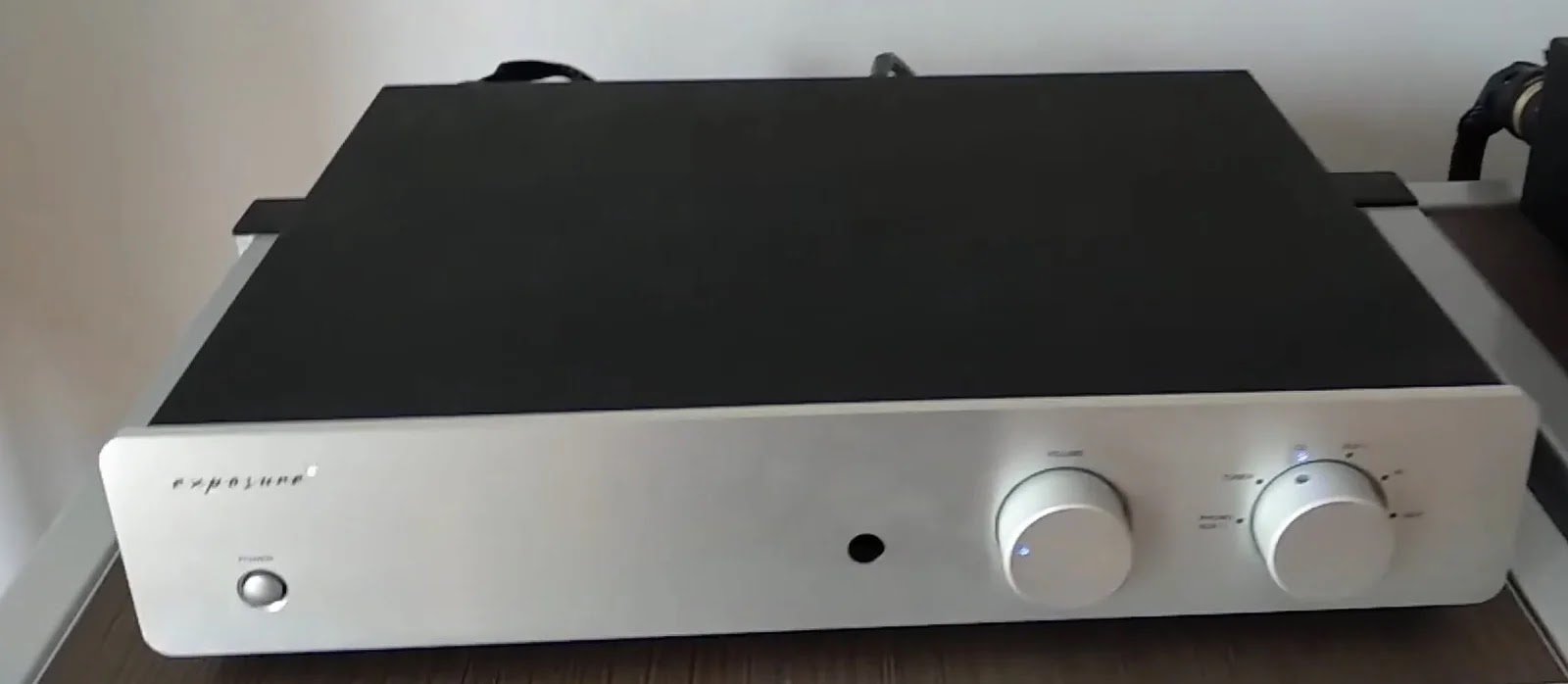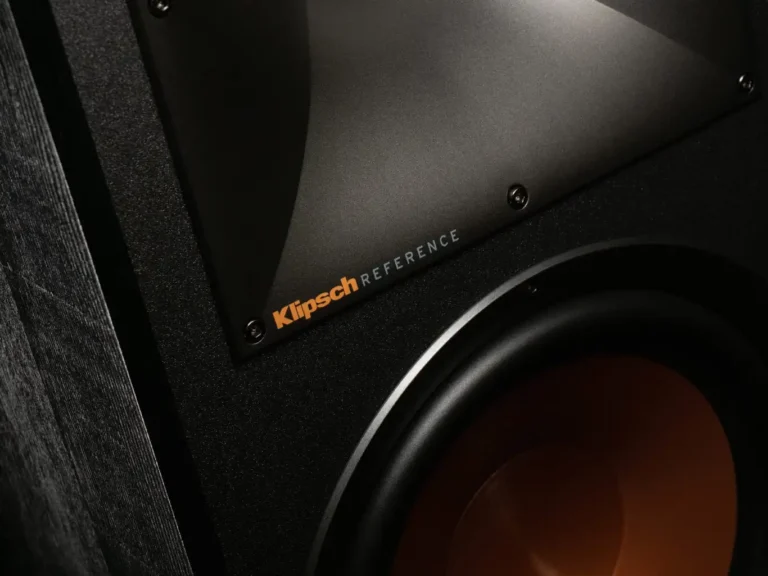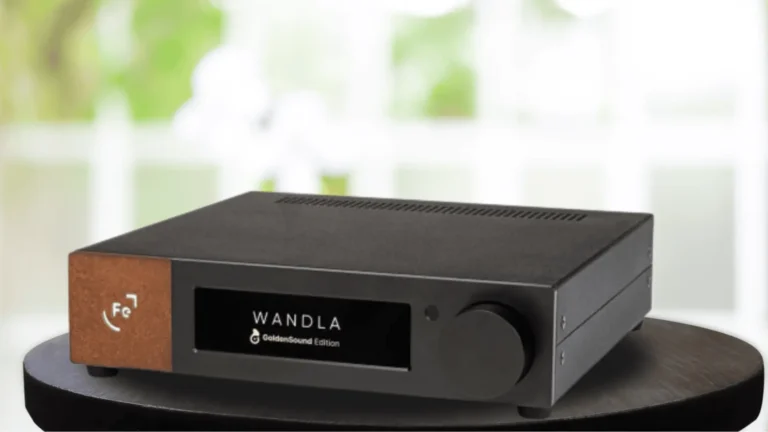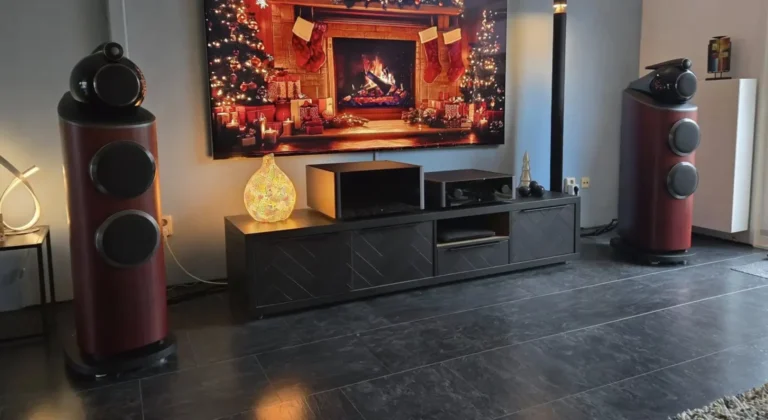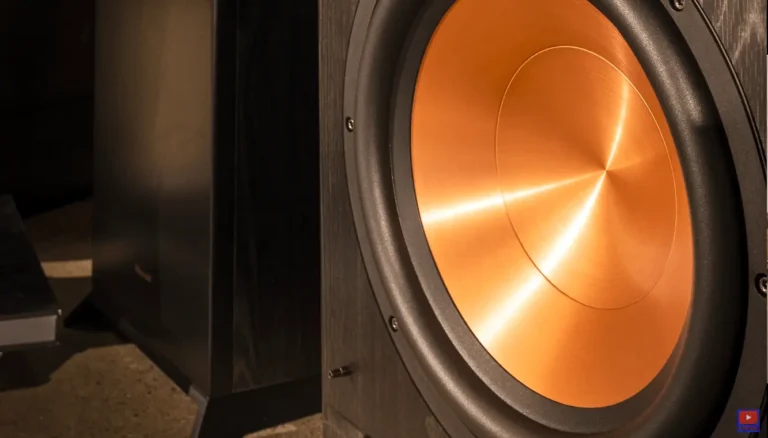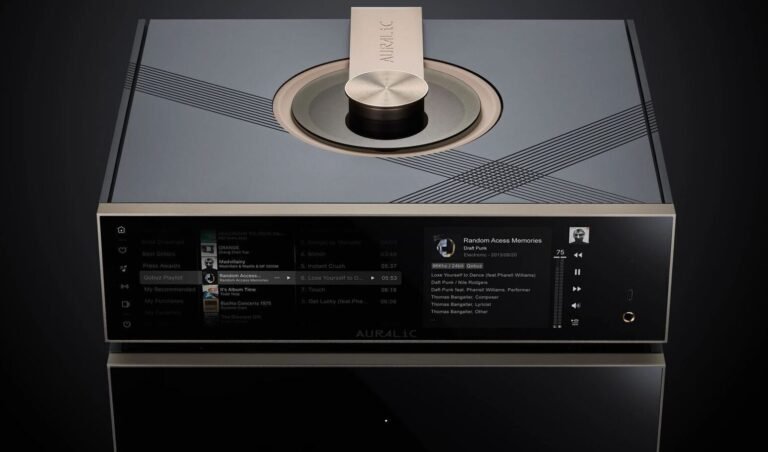Exposure 3010 S2D Review: A Powerful Amplifier
The Exposure 3010 S2D is unmistakably the flagship integrated amplifier in the British range. Not only because it is the only one that has the option of modular expansion with a DSD-capable DAC board. It is also taller, better equipped, and weighs as much as its two smaller but overall very similar brothers (namely 12.0 kilos) – you can find an overview of the family similarities of the Exposure amps here.
Its stately transformer (a ring core type from Czech specialists Toroid) has the highest proportion of the weight, which at least inspires it to an output of 2 x 200 watts (at 4 ohms).
In addition, it cuts a solid figure with its brushed aluminum front and a multitude of connection options on the back: clean corners and edges, insulated housing cover, and precise movement of the volume control. Just as you would imagine a 2,000-euro amplifier to be. And the impression remains even after you unscrew the lid – as the following slide show shows:
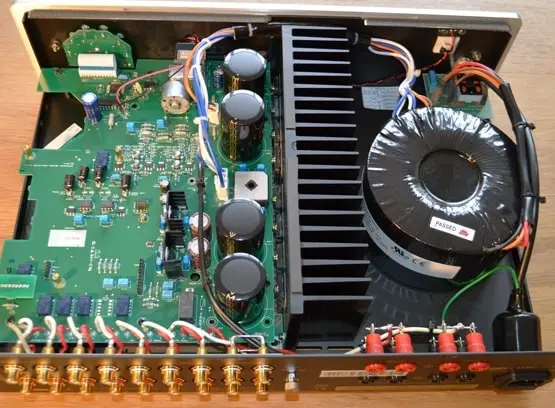
The 3010 S2D is simply the luxury version of the ideals that Exposure has always preached: Exposure boss and chief developer Tony Brady follows the approach of the shortest possible signal paths, the damping factor, and the high current delivery capacity of the power supply particularly consistently.
The inputs are not all permanently assigned. For the Exposure 3010 S2D, there is a phono module for MM or MC (300 euros) and – as the “D” in the name suggests – a DSD-capable DAC slot (400 euros), which makes the 3010 S2D fit for the modern age. In the test, however, we concentrated on the “pure” integrated amplifier – also because it costs almost 3,000 euros when fully equipped.
One of the special features of the 3010 S2D is its two preamp outputs. Exposure recommends bi-wiring or, even better, tri-wiring for three-way speakers for speakers that offer this option. For this, Exposure has stereo power amplifiers (1,500 euros) in its range, which are identical to those in the 3010 S2D. I haven’t tried it out in this specific case, but I follow the Exposure thesis that the sound quality and stability of the system improve significantly. This is comparatively more expensive but leaves the possibility open to improving your system bit by bit.

The inputs are not all permanently assigned. For the Exposure 3010 S2D, there is a phono module for MM or MC (300 euros) and – as the “D” in the name suggests – a DSD-capable DAC slot (400 euros), which makes the 3010 S2D fit for the modern age. In the test, however, we concentrated on the “pure” integrated amplifier – also because it costs almost 3,000 euros when fully equipped.
One of the special features of the 3010 S2D is its two preamp outputs. Exposure recommends bi-wiring or, even better, tri-wiring for three-way speakers for speakers that offer this option. For this, Exposure has stereo power amplifiers (1,500 euros) in its range, which are identical to those in the 3010 S2D. I haven’t tried it out in this specific case, but I follow the Exposure thesis that the sound quality and stability of the system improve significantly. This is comparatively more expensive but leaves the possibility open to improving your system bit by bit.
You may like: non oversampling
Sound Quality Exposure 3010 S2D
In the My listening room, the Exposure 3010 S2D first had to compete with its smaller siblings, although this comparison was quickly over. The 3010 S2D is better in all respects than the 2010 S2D, which is very similar. Both are characterized by this incredibly lively, driving, and very robust sound, which also breathes life into quietly recorded albums.
Precisely because they play so lively and unvarnished dynamically to the point, these amplifiers were a lot of fun. It has something to do with “experiencing music”.
But despite all the similarities in tone: There are whole classes between the two. The Exposure 3010 S2D expands the room much further, its basses have significantly more power, and depth and are much more controlled. Above all, however, he draws the entire mid-high range, voices, strings, and wind instruments with a much finer line and with a little more warmth.
In this, it resembled the little 1010 S2 again, but it didn’t stand a chance against its big brother in terms of attack, bass depth, and control, but above all in the entire coarse and fine dynamic range.
But with the price range references, above all the Yamaha A-S1100 and the Musical Fidelity M5si, some heavyweights were comparable in price and ambitious in terms of sound. The Yamaha, which is almost twice as heavy, has a tendency towards brighter reproduction, which is why the Exposure left it behind after a short time with its higher neutrality, but above all with the more precise timing in the mids.
With electronic music like that of Yello ( Toy ), this character trait didn’t weigh so heavily. Here, the Yamaha convinced with rich bass, while the Exposure, on the other hand, was faster and had better control over the wafting bass grooves: What seemed very deep but also a bit swampy on the Yamaha A-S1100 had much more stability with the Exposure 3010 S2D
The Musical Fidelity M5si was an even harder nut to crack. Its basses weren’t quite as crisp as those of the Exposure either, but they had a lot of blackness and great depth. Above all, however, the harshness that sometimes creeps into the sound with exposure is alien to the musical Fidelity.
Nick Cave’s voice ( Skeleton Tree ) is inherently rough. With the 3010 S2D, it sounded a bit more brittle. A blaring saxophone like in Yuri Honing’s “Walking On The Moon” ( Star Tracks ) had almost too much verve over the Exposure. Here the musical acted more reserved, and smoother. That saxophone part could be heard a lot louder with it than with the Exposure.
However, the M5si did not succeed in playing as precisely and to the point as the 3010 S2D, which also managed to reproduce the room and instrument more precisely in the listening room. The Musical is a great amplifier and if you add up all the points – sound, performance, equipment – it’s the better offer because it’s cheaper.
And yet we ended up sitting in the listening room for hours listening to Exposure 3010 S2D with Dynaudio Contour 20. Simply because this combination sounded a bit more real and lifelike…
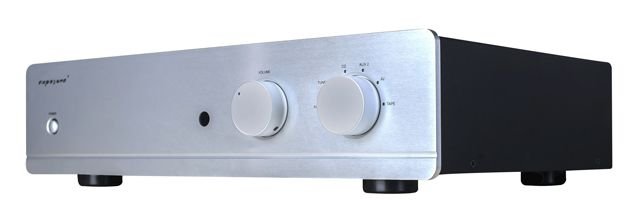
Conclusion Exposure 3010 S2D
The basic version of the Exposure is comparatively spartan. With him, the full concentration is on the sound, which may not be the right thing for everyone.
It embodies a dynamic, robust sound ideal that always sounds a bit more like “life” than most other high-end amplifiers, which are predominantly neutral smooth, and finely tuned.
The 3010 S2D is engaging; he compels the listener to pay attention. This is active music life. Other competitors are better suited for pleasant background blaring.
Exposure 3010 S2D Integrated Amplifier FAQs
Q1: What is the Exposure 3010 S2D?
A: The Exposure 3010 S2D is a high-performance integrated amplifier designed to deliver excellent sound quality for audiophiles. It serves as the centerpiece of Exposure’s 3010 series, offering both power and refined audio for stereo systems.
Q2: What is the power output of the Exposure 3010 S2D?
A: The amplifier delivers 110 watts per channel into 8 ohms, providing enough power to drive a wide range of speakers, including those with lower sensitivity.
Q3: Does the Exposure 3010 S2D have a built-in DAC?
A: No, the 3010 S2D does not include a built-in DAC. It is a pure analog amplifier, focused solely on high-quality analog sound reproduction.
Q4: What input options does the 3010 S2D offer?
A: The amplifier features six line-level analog inputs (RCA), including an optional input for a phono stage upgrade (MM or MC). It also has a dedicated tape output and preamp outputs.
Q5: Is there an option for a built-in phono stage?
A: Yes, the 3010 S2D can be fitted with an optional phono stage for either Moving Magnet (MM) or Moving Coil (MC) cartridges, making it suitable for vinyl enthusiasts.
Q6: Can it be used as a preamplifier?
A: Yes, the 3010 S2D has preamp outputs, allowing it to function as a preamplifier in a more complex system with separate power amplifiers.
Q7: Does the Exposure 3010 S2D come with a remote control?
A: Yes, the amplifier comes with a remote control for convenient volume adjustments and input selection.
Q8: What speakers pair well with the Exposure 3010 S2D?
A: The 3010 S2D is compatible with a wide range of speakers, ideally those with an impedance between 4-8 ohms and a moderate to high sensitivity rating.
Q9: Does the amplifier support bi-wiring or bi-amping?
A: Yes, the amplifier has dual speaker outputs, which can be used for bi-wiring or bi-amping configurations to optimize audio performance.
Q10: What is the difference between the Exposure 3010 S2D and the 2010 S2D?
A: The 3010 S2D offers higher power output (110W vs. 75W per channel), improved circuitry, and greater flexibility in terms of optional upgrades, making it a more advanced model than the 2010 S2D.
Pros and Cons of the Exposure 3010 S2D Integrated Amplifier
Pros:
- High Power Output: With 110W per channel into 8 ohms, the amplifier can drive demanding speakers, delivering dynamic and powerful sound.
- Excellent Sound Quality: Known for its refined, detailed, and natural sound signature with good dynamics and tonal balance, making it suitable for audiophiles.
- Optional Phono Stage Upgrade: Offers the flexibility to add an MM or MC phono stage, catering to vinyl enthusiasts without needing an external preamp.
- Versatile Connectivity: Features multiple analog inputs and outputs, including preamp outputs for expanding the system with additional components.
- Bi-Wiring/Bi-Amping Capability: Dual speaker outputs allow for bi-wiring or bi-amping, enhancing audio performance for compatible speaker setups.
- Solid Build Quality: The amplifier is well-constructed with high-quality materials, ensuring durability and a premium feel.
- Remote Control Included: Provides convenient remote operation for volume and input selection.
- Minimalist Design: The simple design appeals to those who prefer a straightforward, no-frills approach to high-quality audio.
Cons:
- No Built-In DAC: Lacks a built-in DAC, requiring users to purchase an external DAC for digital audio sources like streaming devices or CD players.
- Limited Input Options: While there are multiple analog inputs, there are no digital or balanced (XLR) inputs, which could limit connectivity for some setups.
- No Tone Controls: The amplifier does not include tone controls such as bass or treble adjustments, which may not appeal to users who like to tweak their sound.

